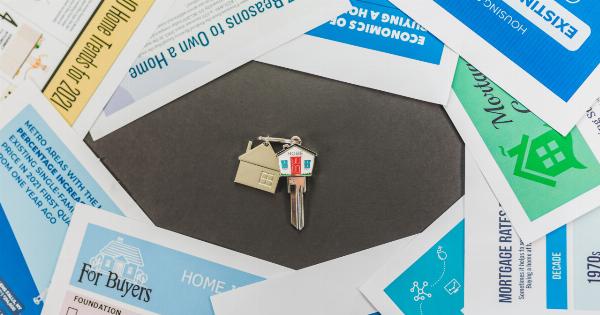Cold legs can be a common occurrence, especially during chilly weather or when you have been sitting or standing for prolonged periods.
However, did you know that cold legs could also be a sign of a serious underlying health issue? In some cases, it may be a harmless condition, while in others, it could indicate a more significant problem that requires medical attention.
Causes of Cold Legs
There are multiple reasons why your legs may feel cold. Some of the common causes include:.
1. Poor Circulation
Poor circulation is a frequent cause of cold legs. When there is inadequate blood flow to the extremities, such as the legs, they may feel cold, numb, or even tingly.
Poor circulation can be due to various factors, including sedentary lifestyle, obesity, smoking, and underlying medical conditions like peripheral artery disease.
2. Nerve Damage
Nerve damage, also known as neuropathy, can lead to cold legs.
Conditions such as diabetes, multiple sclerosis, and peripheral neuropathy can damage the nerves responsible for regulating temperature, causing abnormal sensations and coldness in the legs.
3. Raynaud’s Disease
Raynaud’s disease is a condition that affects the blood vessels, particularly in the fingers and toes. However, it can also extend to the legs.
In Raynaud’s disease, blood vessels constrict excessively in response to cold temperatures or emotional stress, leading to reduced blood flow and cold sensations.
4. Hypothyroidism
An underactive thyroid, or hypothyroidism, can cause cold legs as well. The thyroid gland plays a crucial role in regulating metabolism and maintaining body temperature.
When the thyroid doesn’t produce enough hormones, it can lead to lower body temperatures and cold sensations in the legs.
5. Peripheral Artery Disease
Peripheral artery disease (PAD) is a condition characterized by the narrowing or blockage of arteries that supply blood to the legs and other extremities.
Reduced blood flow can cause coldness, pain, and cramping in the legs, especially during physical activity.
6. Anemia
Anemia occurs when the body doesn’t have enough healthy red blood cells to carry oxygen to tissues and organs. Cold legs can be a symptom of anemia due to the reduced oxygen supply to the legs.
7. Deep Vein Thrombosis
Deep vein thrombosis (DVT) is a serious condition where blood clots form in deep veins, usually in the legs. Along with pain and swelling, coldness in the affected leg can also be a sign of DVT.
8. Autoimmune Disorders
Autoimmune disorders like lupus or rheumatoid arthritis can cause inflammation and damage to blood vessels and tissues, leading to cold legs.
When to Seek Medical Attention
While occasional cold legs may not be a cause for concern, persistent or severe coldness should prompt a visit to a healthcare professional. Additionally, if you experience other symptoms along with cold legs, it is important to seek medical attention.
Signs that warrant immediate attention include:.
– Severe pain in the legs.
– Skin discoloration or changes.
– Difficulty walking or loss of balance.
– Open sores or ulcers on the legs.
– Swelling, warmth, or tenderness in the legs.
– Persistent coldness despite attempts to warm the legs.
What to Do About Cold Legs
If you are experiencing cold legs, there are several steps you can take to alleviate the issue:.
1. Keep Warm
Dress appropriately for the weather and ensure your legs are adequately covered. Wear warm socks, thermal leggings, or leg warmers to keep your legs insulated and maintain their temperature.
2. Stay Active
Regular exercise helps boost circulation and keeps the blood flowing to your legs. Incorporate activities like walking, cycling, or swimming into your routine to improve overall circulation and alleviate coldness.
3. Quit Smoking
Smoking damages blood vessels and impairs circulation. Quitting smoking can significantly improve blood flow, reducing the chances of experiencing cold legs.
4. Elevate Your Legs
When sitting or lying down, elevate your legs to help promote blood flow. Use a pillow or leg elevation device to raise your legs above heart level and encourage proper circulation.
5. Massage Therapy
Massage can help stimulate blood circulation and warm up your legs. Gentle, circular motions can help improve blood flow and relieve coldness.
6. Maintain a Healthy Weight
Excess weight places additional strain on your circulatory system. By maintaining a healthy weight, you can reduce the risk of poor circulation and keep your legs warm.
7. Stay Hydrated
Proper hydration is essential for optimal blood circulation. Ensure you drink enough water throughout the day to support healthy circulation and maintain warmth in your legs.
8. Visit a Doctor
If your cold legs persist, worsen over time, or are accompanied by other concerning symptoms, it is crucial to seek medical advice.
A healthcare professional can evaluate your symptoms, perform diagnostic tests if necessary, and determine the underlying cause.
Conclusion
While cold legs can often be attributed to benign causes like cold weather or temporary reduced blood flow, it is important not to ignore persistent coldness or additional concerning symptoms.
By understanding the potential underlying causes of cold legs and taking appropriate steps to promote circulation and warmth, you can ensure your legs stay healthy and address any serious health issues in a timely manner.





























